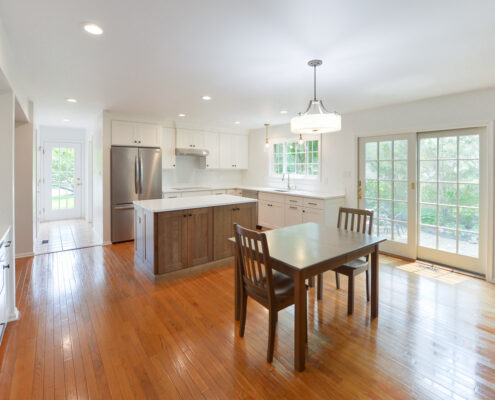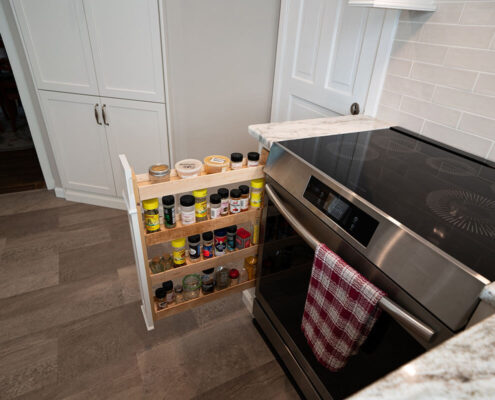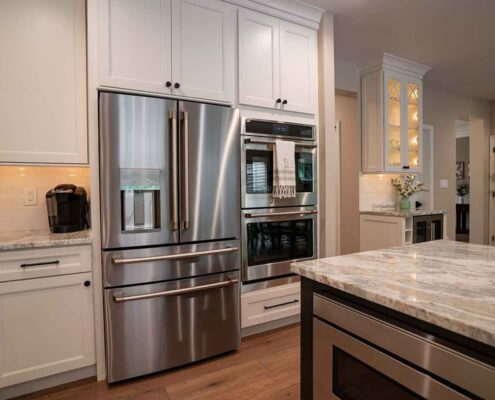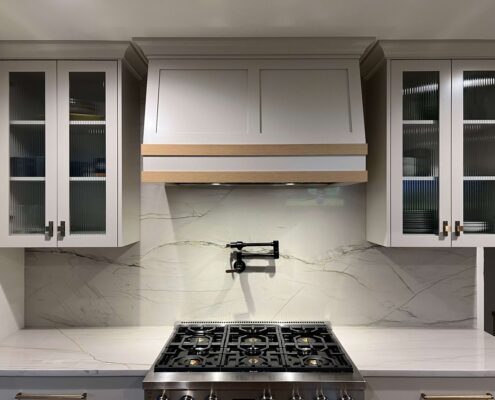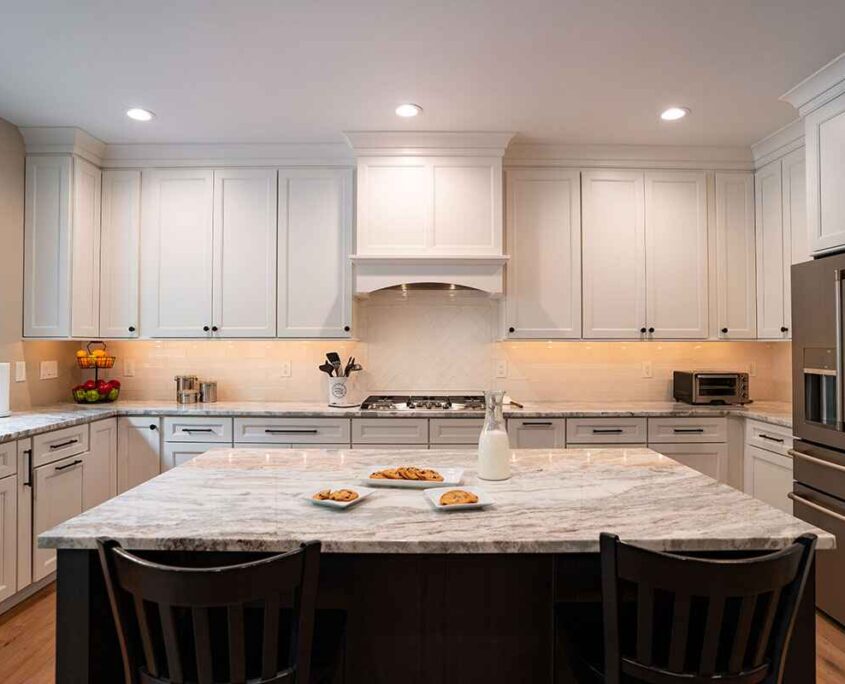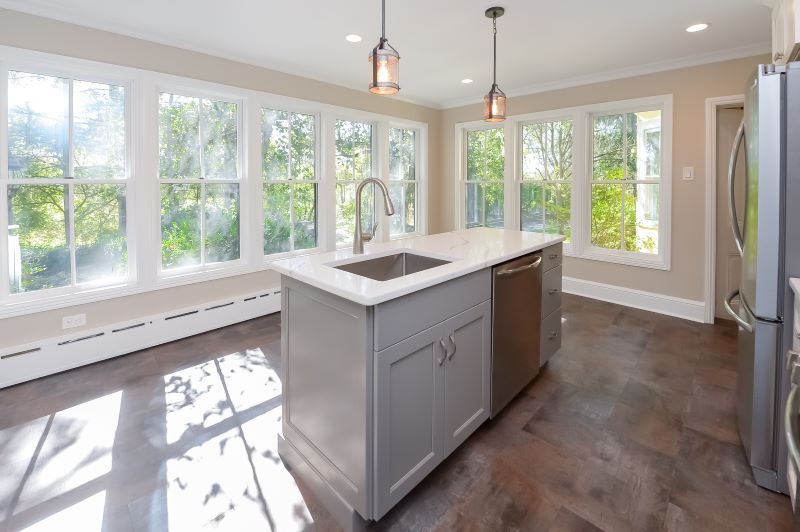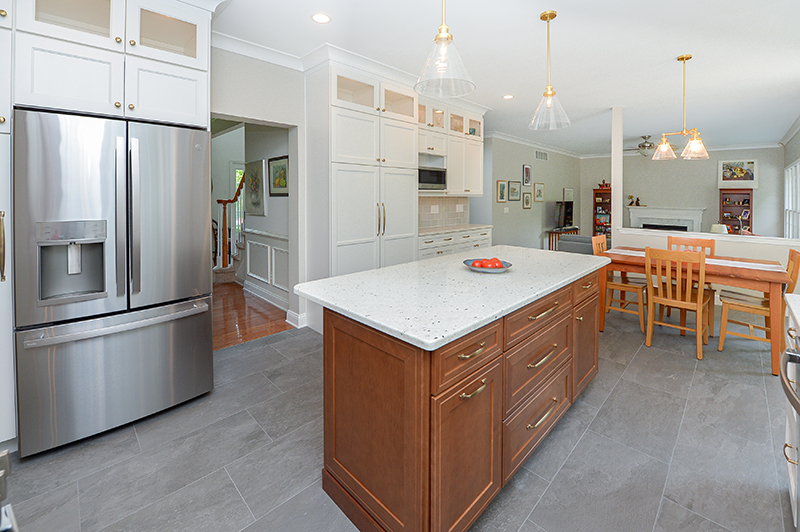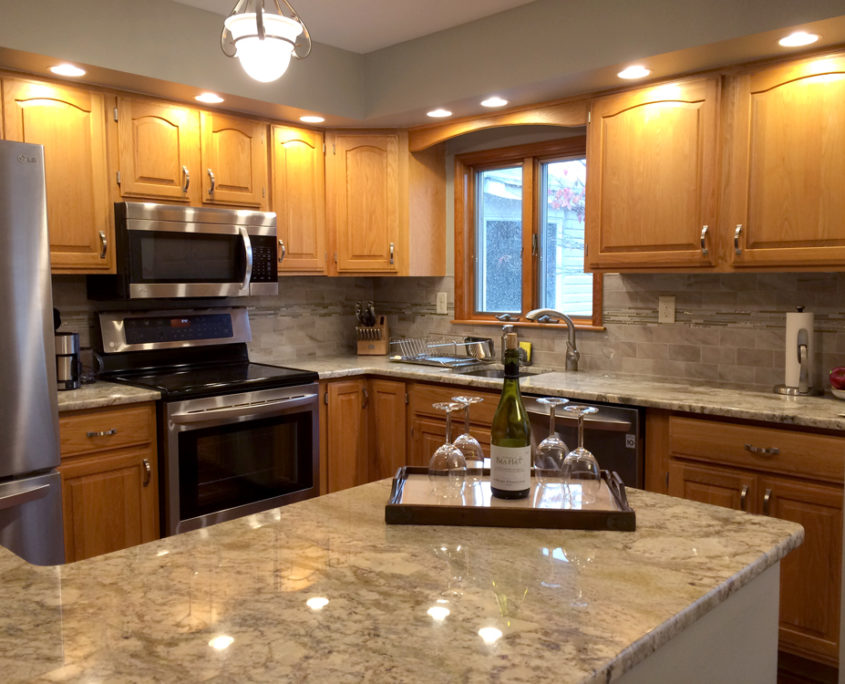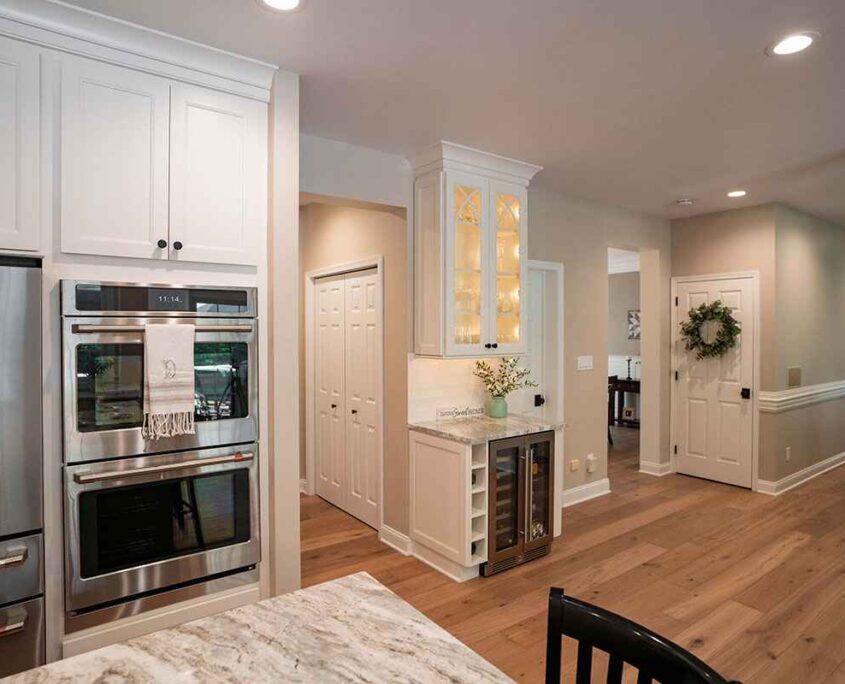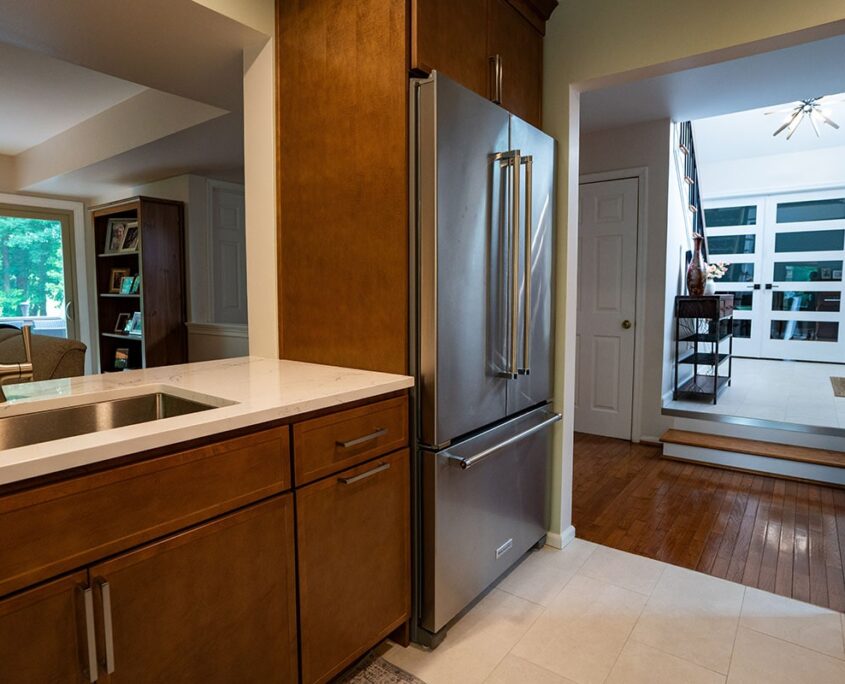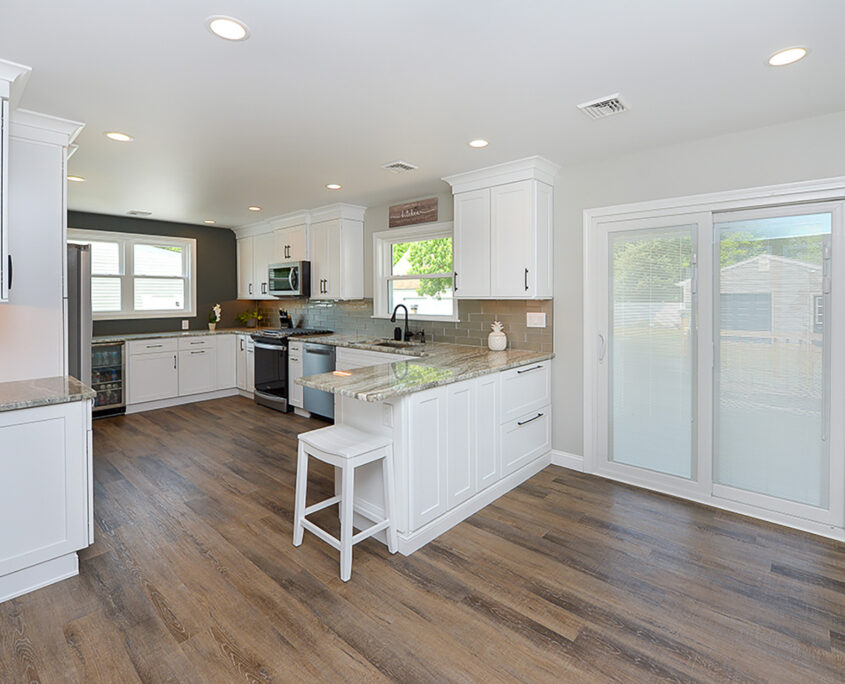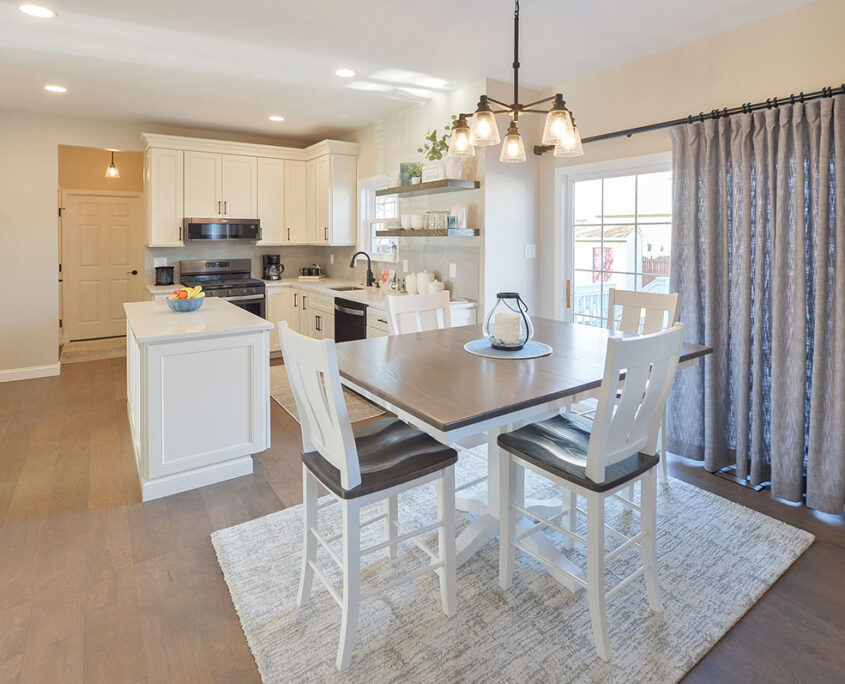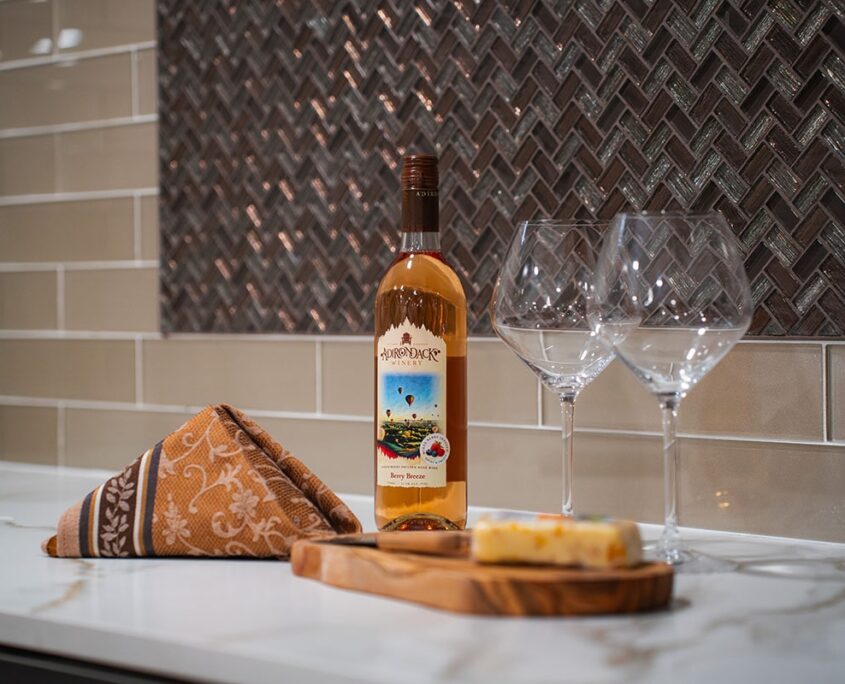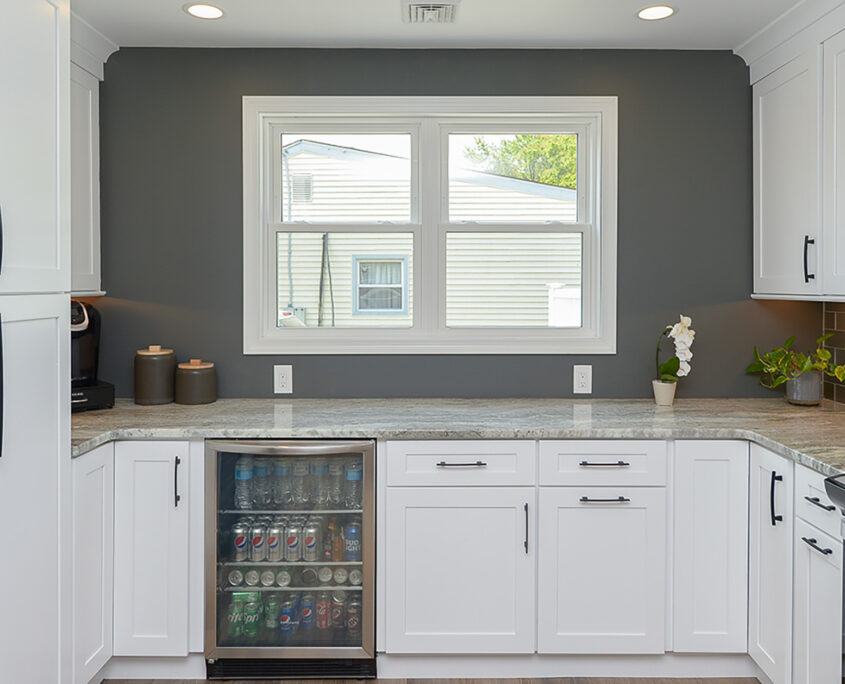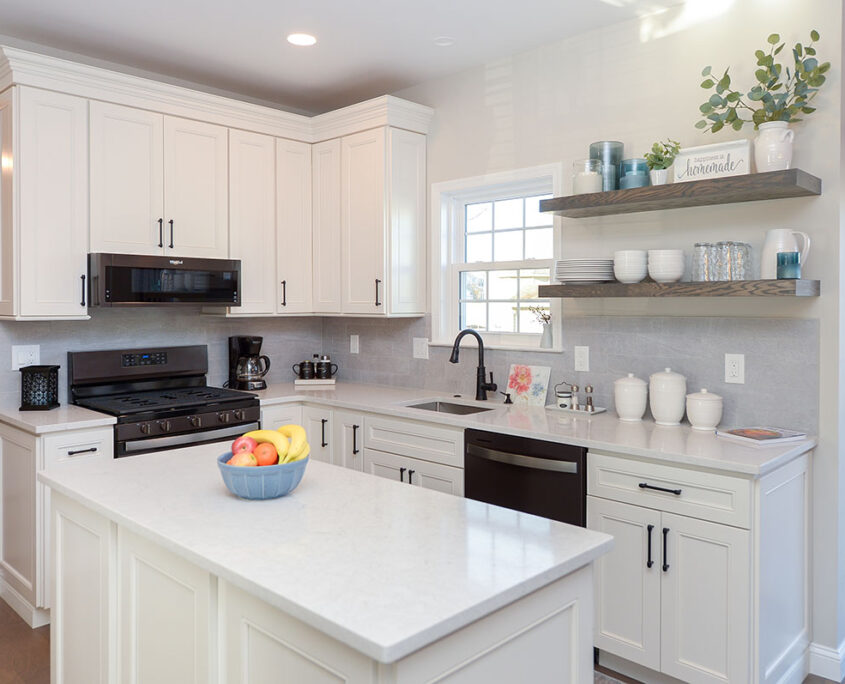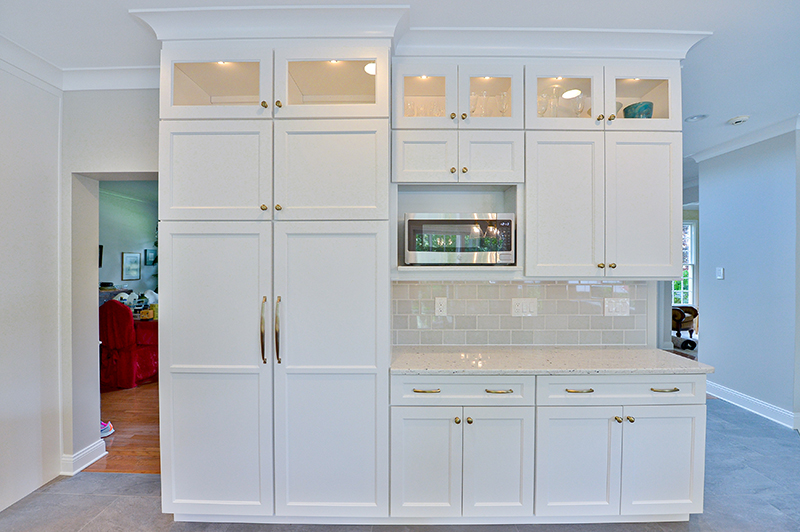Kitchen Remodeling in South Jersey
Not every kitchen is all it’s cooked up to be. It might be a chore to work in due to excessive clutter or wear and tear. It might underwhelm as a social space, hampering your ability to host and entertain. A poorly conceived kitchen can seriously diminish both the value of and your personal enjoyment in your home.
The kitchen is one of the most important — if not the most important — rooms in your living area. Make the upgrades it’s been starving for with Ayars’ full complement of South Jersey kitchen remodeling services. Whether you need to increase storage, optimize your layout, or improve lighting and aesthetics, Ayars has the experience to make your dream kitchen a reality.
Kitchen Remodeling Contractors South Jersey Trusts
Wendy and I knew at a high level what we wanted to do with our kitchen. The Ayars team really helped us hone in on the details. From the minute that they showed up on site, they put up a dust wall that literally contained all of the debris and all of the dust.
Communication was fantastic. The project manager would let you know what to expect — what they have done this week, what they were going to do next week.
-Jim, Homeowner in Mullica Hill, NJ
When my wife and I bought our house in 2020, we had a list of items we wanted to update and quickly began knocking things off of our list. Knowing that we wanted a kitchen remodel, we got used to our space and started brainstorming some ideas for a new floor plan, quickly realizing that we weren’t designers! Ayars’ has always had a great reputation in home renovations, and we knew that when we were ready, we’d be contacting them. Four years later, we decided to move forward and our experience was exactly what we expected… perfect.
Our family hired Ayars to perform a kitchen remodel in our home. They were referred to us by multiple family friends as best in the business. We were not disappointed! We love our new kitchen and the experience with the ownership and team was professional and friendly. From design, to demo, to buildout, everything was explained and expertly executed. When problems did arise, they were also explained and collaborated on to find solutions. One area that sets certain outfits apart is how they handle challenges and obstacles, and this group hit a home run. Would highly recommend you give them a call for your next project.
What Is Your Kitchen Remodeling Goal?
Service Area
Ayars provides kitchen remodeling services to Gloucester County and parts of Camden County in South Jersey, including:
- Clarksboro, NJ
- Mantua Township, NJ
- Mickleton, NJ
- Mullica Hill, NJ
- Sewell, NJ
- Swedesboro, NJ
- Wenonah, NJ
- West Deptford, NJ
- Woodbury, NJ
- Woolwich Township, NJ
Our design showroom in Mickleton, NJ is open to new customers by appointment only.

Kitchen Remodeling Tips
Frequently Asked Questions
Kitchen FAQs
The cost of a kitchen remodel can vary widely depending on several key factors. Here are some of the most significant factors that impact the cost:
- Scope of the Remodel: The extent of the remodel—whether it’s a minor update or a complete overhaul—will greatly affect the cost. A full remodel that includes changing the layout, replacing all appliances, and updating plumbing and electrical systems will be more expensive than a simple refresh.
- Materials and Finishes: The choice of materials for countertops, cabinets, flooring, and backsplashes can significantly influence the cost. High-end materials like granite, marble, or custom cabinetry will be more expensive than laminate or stock options.
- Appliances: The type and quality of appliances you choose can also impact the budget. High-end, energy-efficient appliances will cost more than standard models.
- Labor Costs: Labor is a major component of remodeling costs. This includes the cost of not only our own craftsmen, but also our contracting partners (electricians, plumbers, etc). Labor costs will vary based on the scope and complexity of the work.
- Kitchen Size: The size of the kitchen will naturally affect the cost, as larger spaces require more materials and labor.
- Structural Changes: If the remodel involves structural changes, such as removing or adding walls, this can increase costs due to the need for additional permits, engineering, and construction work.
- Plumbing and Electrical Work: Upgrading or moving plumbing and electrical systems can add to the cost, especially if the existing systems are outdated or not up to code.
- Permits and Inspections: Depending on the scope of the remodel, you may need permits and inspections, which can add to the overall cost.
- Design and Planning: Hiring a designer or architect to plan the remodel can add to the cost, but it can also help ensure that the project is well-executed and meets your needs.
- Unexpected Issues: Unforeseen problems, such as water damage or outdated wiring, can arise during a remodel and add to the cost.
On average, our high-end kitchen remodels in South Jersey run anywhere from $55,000 to$75,000. Careful planning and budgeting can help manage these costs effectively.
The kitchen triangle is the distance between the sink, stove, and refrigerator — the three most important workstations when preparing a meal. The National Kitchen and Bath Association recommends that each leg of the triangle be no shorter than 10 feet and no greater than 25 feet and remain free of clutter and obstruction. By planning with the kitchen triangle in mind and positioning appliances appropriately, your kitchen remodeling contractor can greatly improve the functionality of your new kitchen.
Most kitchen remodels that do not involve moving the plumbing locations can be completed in 4 to 5 weeks. More involved kitchen renovations that include gutting the kitchen completely, possibly moving sink and appliance locations, and/or implementing more elaborate cabinetry and finish trim details can push the timeframe out several more weeks. All of this is discussed in the planning phases and a complete schedule will be finalized prior to the project start. Setting clear and honest expectations is a priority of the Ayars team and a hallmark of our reputation for exceptional service.
Brightening up a dark kitchen can make it feel more inviting and spacious. Here are some effective strategies to achieve this:
A well-orchestrated kitchen lighting layout that provides ample illumination overall while highlighting prime task areas and focal points. Our go-to lighting types are:
- Recessed overhead lighting (aka can lights): Provide general illumination while providing a clean, modern look.
- Under-Cabinet Lighting: Add LED strip lights or puck lights under cabinets to illuminate countertops.
- Pendant Lights: Use pendant lights over islands or dining areas to add focused lighting and style.
Windows and skylights
- A garden or casement window behind the sink is standard for most kitchens.
- Picture windows with large viewing areas are great if you’re blessed with a beautiful yard or natural surroundings. Keep windows unobstructed and use sheer or light-colored window treatments.
- Skylights and/or solar tubes will bring in more natural light
Colors and finishes
- Light, neutral colors for walls and cabinets reflect more light and give a sense of more dimension.
- If utilizing darker colors or stains for cabinetry, we recommend contrasting with lighter countertops and/or floors.
- Stainless steel appliances are reflective and will help your new kitchen sparkle.
Declutter!
- We don’t necessarily need to knock out walls to create a more open feel. Open shelving can free up some wall space, while nifty build-ins and storage solutions help our customers preserve precious counter space.
The best material for kitchen countertops depends on your priorities in terms of aesthetics, durability, maintenance, and budget. In general, kitchen counter materials fall into one of two major categories:
Natural Stone
Pros:
- Aesthetics: Natural stone, such as granite, marble, and soapstone, offers unique, one-of-a-kind patterns and colors that can add a luxurious and timeless look to your kitchen.
- Durability: Many natural stones, like granite, are very durable and heat-resistant.
- Value: Natural stone can add value to your home due to its high-end appeal.
Cons:
- Maintenance: Natural stone is porous and often requires regular sealing to prevent stains and damage, especially marble.
- Cost: It can be more expensive than some engineered options.
- Variability: The natural variation in stone can be a pro or con, depending on your preference for uniformity.
Engineered Materials
Pros:
- Durability: Engineered materials like quartz are non-porous, making them generally resistant to stains, scratches, and bacteria without the need for sealing.
- Consistency: They offer consistent patterns and colors, which can be a plus if you prefer a uniform look.
- Low Maintenance: Generally easier to maintain than natural stone, requiring only regular cleaning.
Cons:
- Aesthetics: While engineered materials can mimic the look of natural stone, some people feel they lack the unique character of natural stone.
- Heat Resistance: Some engineered materials, such as solid surface, may not be as heat-resistant as natural stone and will need to be insulated against hot pots and pans.
While both materials include very impressive and quality offerings, we find many of our customers opt for natural stone for its unique, timeless beauty — but higher-end engineered countertops can pretty closely approximate the look.
One of the emerging trends in kitchen backsplashes has been large-format tiles or slab backsplashes, with a preference towards natural stone and a sleeker, more modern, European feel. Integrating the backsplash with the same countertop material — another popular request — requires a lot of planning and attention to detail.
Not necessarily — in fact, some customers are forgoing them altogether. One thing is certain — microwaves in modern kitchens have assumed a much lower profile than they used to. Mounting a microwave over the range has become exceedingly rare in modern kitchen design —which leaves room for the range hood to become a statement piece.
Still, the convenience of a microwave is tough for most folks to give up entirely. To minimize their influence on the overall kitchen aesthetic, we’ll often hide them in base cabinets or install a sleeker and more integrated alternative, such as a steam oven or microwave drawer.
Hardly — at least from our point of view! A large kitchen island (in tandem with a more open layout) remains a highly popular request for the simple fact that family and guests almost always hover in the kitchen. A dedicated gathering area in one of the most communal spaces in the home just makes too much sense for most folks.
The main difference between a pantry cabinet and a pantry closet is how they make use of space. A pantry closet is effectively a small room with 2-3 shelves and then the floor space below for storage. In larger homes, it can be a luxury to have a large, walk-in pantry closet.
But we tend to favor full-height (i.e. floor to ceiling) pantry cabinets for their flexibility and versatility — their entire cubic volume is dedicated to storage and storage alone (they don’t have to accommodate walk-ins), and we can combine stationary and pull-out shelving for a fully customized storage solution. Plus, they’re a lot nicer to look at.
There are a few things to consider when choosing the right appliance package for your kitchen, and we’ll review these things thoroughly prior to project kickoff:
- Functionality: There is a kitchen appliance for absolutely anything and everything you might want to accomplish in the kitchen nowadays. We’ll start with the essentials (refrigerator, oven/range, and dishwasher) before diving into more niche products. Modern high-end appliances offer some pretty awesome features and we work closely with our appliance supplier to find a match for your needs.
- Budget: We firmly believe that kitchen appliances should be equal to their surroundings, and therefore strongly advise our clients to leave room in their budgets for higher-end appliances that fit in with the beautiful new kitchen remodel you just invested in!
- Power: Electrical requirements are growing substantially, with most high-end appliances requiring dedicated circuits. What used to be an average of 5 dedicated circuits required for a kitchen has now grown to 7-10+ depending on the package. Everything draws power and we have to be mindful of the space in the panel and what is required by code, as well as your needs.
There are several places you can set up a makeshift kitchen while your kitchen proper undergoes reinvention. A few we recommend are:
- A corner of your dining room
- A section of your living room
- A parcel of your finished basement
Ultimately, you need enough space to accommodate a small prep area, a compact cooking appliance or two (e.g. portable induction cooktop, toaster oven, or microwave), and a mini-fridge (if not the full-sized fridge from the previous iteration of your kitchen). Proximity to running water is the biggest challenge for most folks — we’ve seen people utilize laundry room sinks, basement or garage utility sinks, or even the hose outside during the warmer months.
We know that surviving a kitchen remodel can be tough, so restoring running water within 4 weeks is our first priority.
Request a Consultation
Browse our available services to see if Ayars is the right fit for your project.

